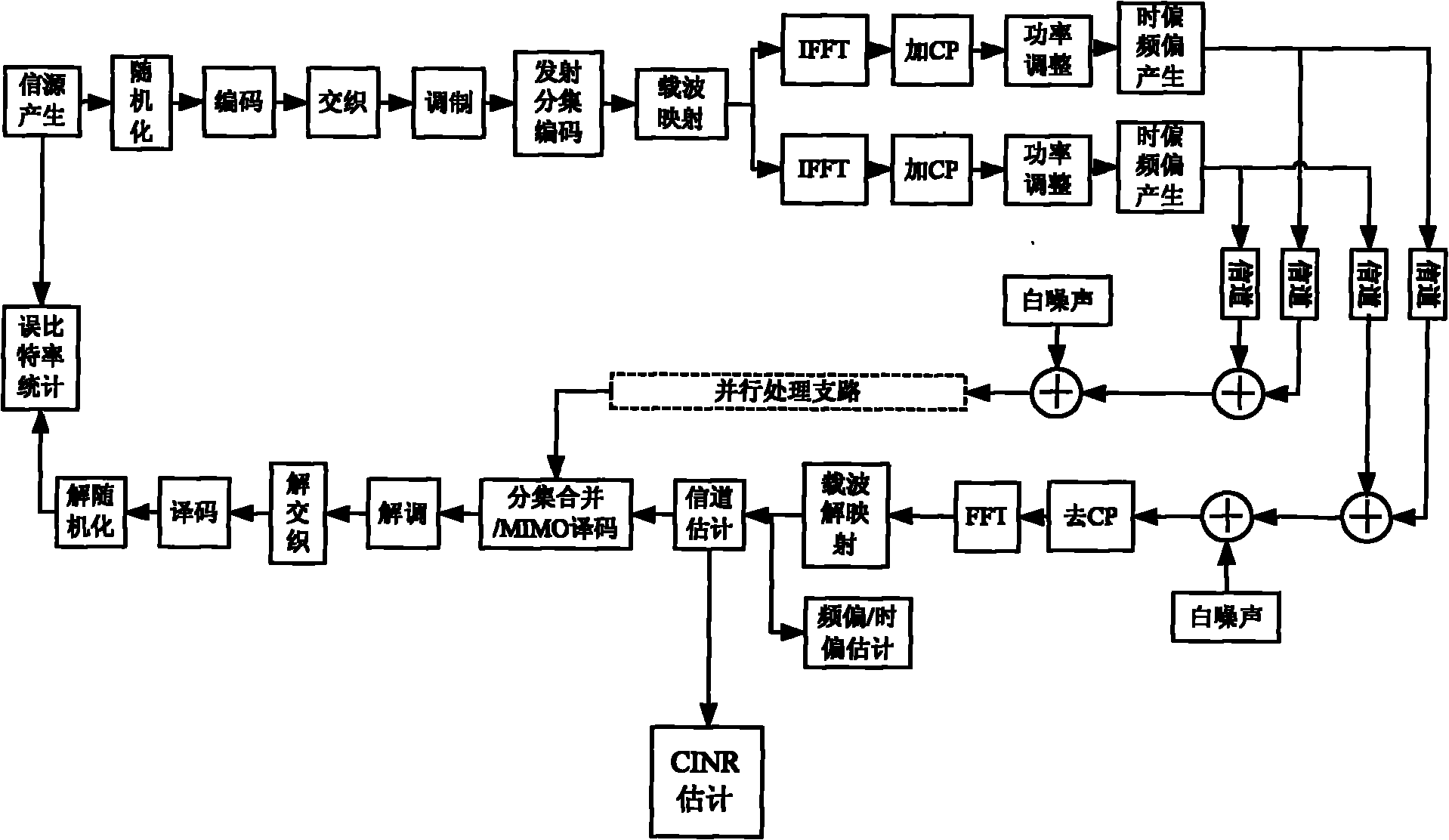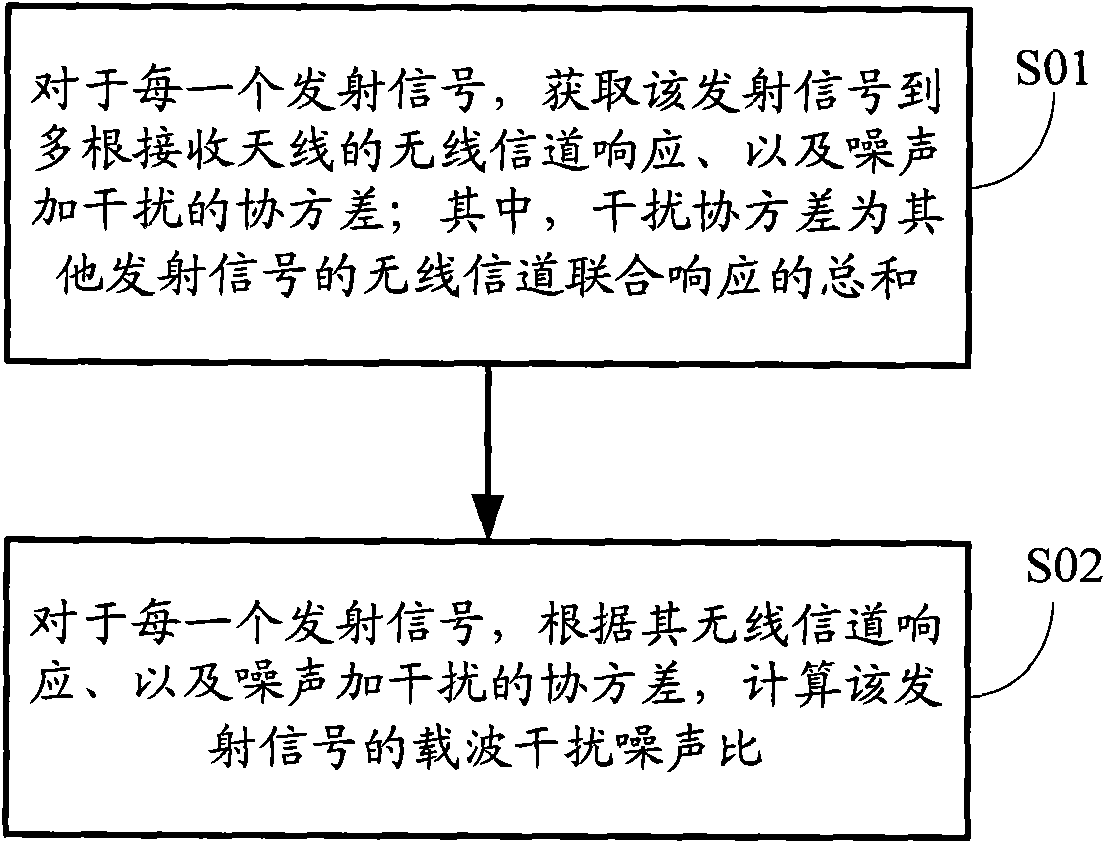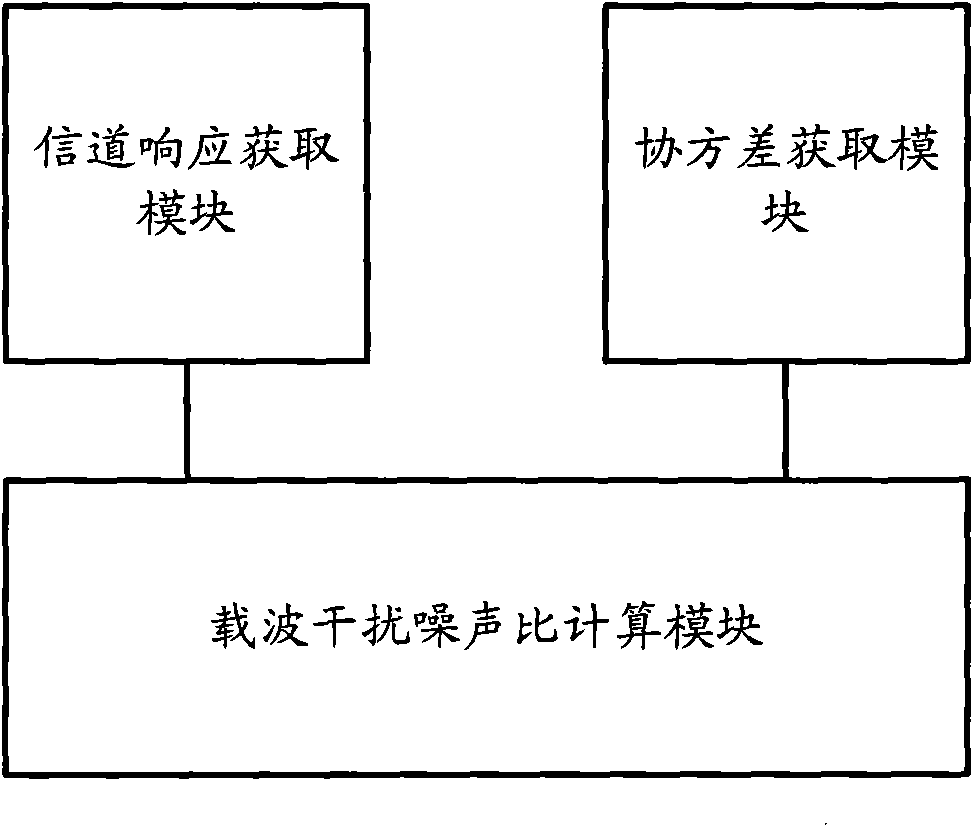Method and device for estimating CINR of MLD receiver in MIMO system
A receiver and receiving antenna technology, applied in the field of digital communication, can solve problems such as inability to calculate CINR, lack of signal power characteristics, etc.
- Summary
- Abstract
- Description
- Claims
- Application Information
AI Technical Summary
Problems solved by technology
Method used
Image
Examples
Embodiment Construction
[0024] The specific implementation manners of the present invention will be described in detail below in conjunction with the accompanying drawings.
[0025] The present invention mainly relates to a method for estimating CINR of signals received by SM technology based on MIMO. The CINR method can realize CINR estimation of MLD receivers and can estimate multiple different users at the same time.
[0026] In a MIMO SM system, the data streams of multiple users can be regarded as mutual interference, and the process of solving SM is equivalent to multi-user data detection. Using H-BLAST with SM [BLAST, Bell Labs Layered Space-Time, layered space-time coding, including H-BLAST (horizontal space-time coding), V-BLAST (vertical space-time coding), D-BLAST (diagonal space-time coding) Time coding)] encoding multiple data streams as an example, it is necessary to estimate the CINR of each data stream after de-spatial multiplexing.
[0027] Demultiplexing receivers can be divided in...
PUM
 Login to View More
Login to View More Abstract
Description
Claims
Application Information
 Login to View More
Login to View More - R&D
- Intellectual Property
- Life Sciences
- Materials
- Tech Scout
- Unparalleled Data Quality
- Higher Quality Content
- 60% Fewer Hallucinations
Browse by: Latest US Patents, China's latest patents, Technical Efficacy Thesaurus, Application Domain, Technology Topic, Popular Technical Reports.
© 2025 PatSnap. All rights reserved.Legal|Privacy policy|Modern Slavery Act Transparency Statement|Sitemap|About US| Contact US: help@patsnap.com



